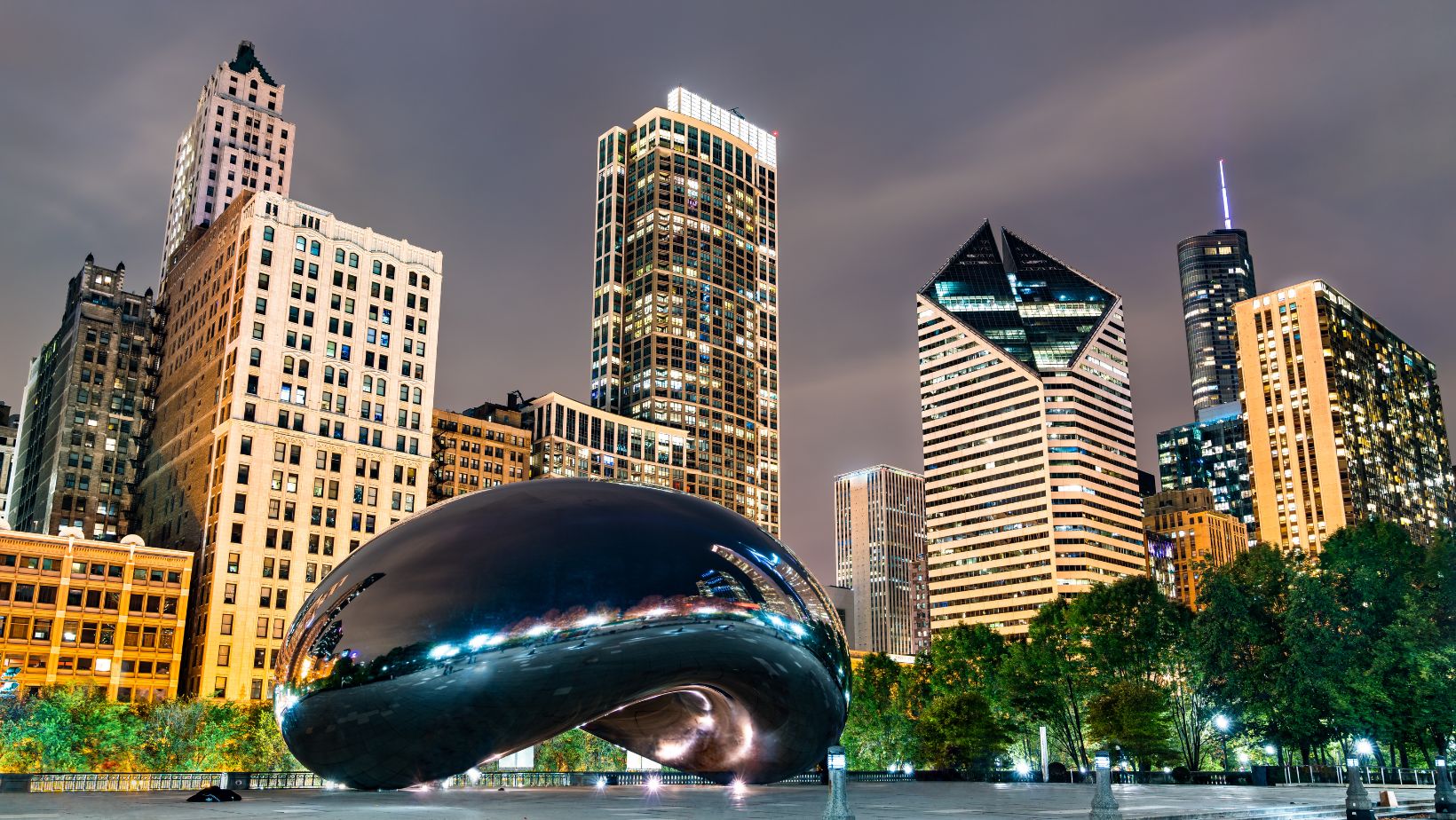Chicago, the Windy City, pulses with an urban vibe that’s both dynamic and inviting. From its towering skyscrapers to its vibrant street art, the city offers a unique blend of history and modernity. Visitors and locals alike find themselves drawn to its diverse neighborhoods, each with its own distinct flavor and charm.
Urban Vibe Chicago

Chicago’s urban vibe offers a distinct amalgamation of energy, excitement, and sophistication. The downtown area, commonly referred to as The Loop, is bustling with activity, boasting iconic landmarks like the Willis Tower, Millennium Park, and the Art Institute of Chicago. The cityscape features a harmonious blend of historic and contemporary architecture, making it a visual treat for visitors.
The neighborhoods each contribute to the city’s dynamic feel. Pilsen, with its mural-clad streets and vibrant arts scene, attracts creatives and art lovers. Hyde Park, home to the University of Chicago, is rich with history and intellectual charm. Meanwhile, Wicker Park and Bucktown are known for their trendy boutiques, cafes, and nightlife, catering to a hip and young crowd.
Cultural institutions play a key role in defining Chicago’s urban character. Spaces like the Chicago Cultural Center, Lincoln Park Zoo, and the Museum of Science and Industry provide residents and visitors with a wide range of activities. Chicago’s culinary landscape, featuring deep-dish pizza, Michelin-starred restaurants, and diverse food festivals, further enhances its appeal as a vibrant urban hub.
Popular Neighborhoods

- The Loop: The Loop stands as Chicago’s central business district, brimming with skyscrapers and historic theaters. Key landmarks include Willis Tower, Millennium Park, and the Art Institute of Chicago, offering a mix of business, culture, and entertainment.
- Pilsen: Pilsen attracts creatives with its vibrant street art and colorful murals. The neighborhood’s rich Mexican heritage is reflected in local eateries, bakeries, and the National Museum of Mexican Art, making it a cultural hotspot.
- Wicker Park & Bucktown: Wicker Park and Bucktown cater to a trendy, youthful crowd. These adjacent neighborhoods feature indie boutiques, live music venues, and trendy cafes. The area is known for its laid-back atmosphere and eclectic nightlife.
- Hyde Park: Hyde Park combines historical charm with academic prestige. Home to the University of Chicago and the Museum of Science and Industry, the neighborhood offers picturesque architecture and a scholarly ambiance.
- Lincoln Park: Lincoln Park offers a blend of nature and urban amenities. Highlights include the Lincoln Park Zoo, the Chicago History Museum, and an array of upscale dining and shopping options, making it family-friendly and vibrant.
- River North: River North is an art lover’s dream. With numerous galleries, design studios, and high-end restaurants, this neighborhood stands out for its sophisticated vibe and proximity to the famous Magnificent Mile.
Cultural Attractions

Chicago’s cultural attractions offer a rich tapestry of experiences. The Art Institute of Chicago, housing over 300,000 works, features masterpieces like Grant Wood’s “American Gothic.” The Field Museum showcases natural history, including the famous T. rex skeleton, Sue. Visitors enjoy the Museum of Science and Industry, notable for its hands-on exhibits like a World War II submarine.
Neighborhoods also add to the cultural landscape. Pilsen’s National Museum of Mexican Art highlights Latino culture with extensive exhibits and programs. The DuSable Black History Museum in Hyde Park provides deep insights into African American history. Cultural hubs like these enhance Chicago’s vibrant urban vibe, offering something for everyone.
Transportation And Accessibility
Chicago offers extensive transportation options, enhancing its accessibility and urban vibe. The Chicago Transit Authority (CTA) operates an expansive network of buses and trains. The “L” trains serve 145 stations, covering eight lines and 224.1 miles. Key routes, such as the Red Line and Blue Line, connect major areas like The Loop, O’Hare Airport, and various neighborhoods.
Metra, the regional rail system, provides commuters with 11 lines and 241 stations. This ensures suburbs remain connected to the city center. Meanwhile, the South Shore Line extends into Indiana, broadening connectivity.
Chicago’s streets support diverse transit modes. Bike lanes and Divvy bike-sharing stations promote cycling. According to the Chicago Department of Transportation, the city boasts over 200 miles of protected bike lanes.

